With the way the world is going, I think we should take a look at history and what people did to get through hard times. Whether or not the events of the world create havoc, I’m a deep believer that we should do what we can to make our systems localized and sustainable, with a goal of more self-sufficient people. And victory gardens do just that – all in your backyard. And what if everything in the world turns out just fine? Wonderful – that’s what we pray for! In that case, we’ll just have more knowledge, more control over our food, and some yummy, homegrown fruits and vegetables to eat. So let’s take some tips from our grandparents and great grandparents, and get in the garden.
“Go back to simple food, simple clothes, simple pleasures. Pray hard, work hard, sleep hard and play hard. Do it all courageously and cheerfully.” – Herbert Hoover
National Archives and Records Administration. (n.d.). Sow the seeds of victory! posters from the Food Administration during World War I. National Archives and Records Administration. Retrieved March 18, 2022, from https://www.archives.gov/education/lessons/sow-seeds
What are Victory Gardens?

A Victory Garden was grown to aid a family’s diet during World War I & II, in a way to help the war effort. The government recommended that citizens grow some of their food to relieve pressure on the commercial production & supply of food to send it to those deployed. Citizens who typically didn’t have gardens and weren’t on farms started to grow food in their backyards and porches; anywhere they could find the space.
The government gave recommendations and helpful information through leaflets and propaganda posters to encourage and get citizens started. This also impacted patriotism and gave those who couldn’t directly be in the war, like mothers and children, a different way to make an impact.
The point of this blog post is not to engage in a political conversation. I’m just looking at what happened in history, its effects on history and people, and how we can each voluntarily implement the good.
Why is This Important Today?
It’s very difficult to explain this in a way that is not political, but I’m going to do my darndest to try. We are currently (this is March 2022) in a world situation that is… very tense, to say the least. The situation is constantly developing and quickly. Whether or not this world situation continues to develop and ultimately turns into a “world war III” situation – the possibility is there. I’m not saying that it will, but the outlook doesn’t look particularly great.
This is not to scare anyone; as a prepper, I try to evaluate all the possibilities of what can happen. I don’t focus on one, “this is going to happen” thing. In evaluating all those possibilities, I then ask myself every day, what can I be doing to better prepare for the largest amount of possible scenarios?
So if things continue to develop into a “world war III” situation, I then ask myself, what did the government and the people do on the homefront in the previous two world wars? What made a real positive impact? And one of those things that happened during both world wars, was a heavy emphasis on Victory Gardens.
I think it’s important to note that it doesn’t have to be all “doom and gloom”. As preppers, we can choose to do actions that are just good actions to take even if none of the negative scenarios come to pass. More local economies and sustainable agriculture? Yes, please! Being more self-sufficient and learning beneficial skills? Bring it on!
The Impact of Victory Gardens on the Homefront in World War I
“As a result of these combined efforts, 3 million new garden plots were planted in 1917 and more than 5.2 million were cultivated in 1918, which generated an estimated 1.45 million quarts of canned fruits and vegetables.”
Schumm, L. (2014, May 29). America’s Patriotic Victory Gardens. History.com. Retrieved March 18, 2022, from https://www.history.com/news/americas-patriotic-victory-gardens
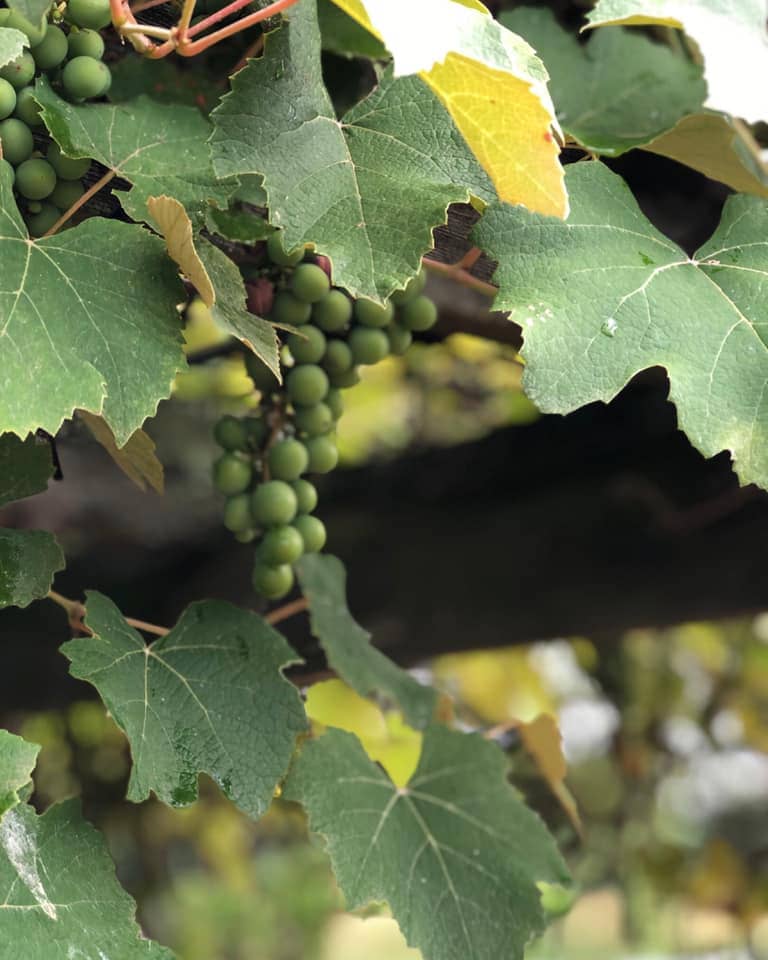
The Impact of Victory Gardens on the Homefront in World War II
“In 1942, roughly 15 million families planted victory gardens; by 1944, an estimated 20 million victory gardens produced roughly 8 million tons of food—which was the equivalent of more than 40 percent of all the fresh fruits and vegetables consumed in the United States.”
Schumm, L. (2014, May 29). America’s Patriotic Victory Gardens. History.com. Retrieved March 18, 2022, from https://www.history.com/news/americas-patriotic-victory-gardens
This should be incredibly inspiring for someone new to gardening. 40% – wow, that is amazing! All of that was done by people who were not farmers but were planting victory gardens.
Rationing in WWII
Shortly after the USA entered World War II, rationing started. This was a system put in place by the government restricting each citizen to only buying a particular amount of certain foods, like sugar, meats, fats, etc per month. This also applied to other supplies like gasoline, other fuels, rubber, and even things like nylon. This was done through the use of ration books that had stamps that were required to buy the items.
“With the introduction of food rationing in the United States in the spring of 1942, Americans had an even greater incentive to grow their own fruits and vegetables in whichever locations they could find: small flower boxes, apartment rooftops, backyards or deserted lots of any size.”
Schumm, L. (2014, May 29). America’s Patriotic Victory Gardens. History.com. Retrieved March 18, 2022, from https://www.history.com/news/americas-patriotic-victory-gardens
There was also an emphasis put on using every little thing to the fullest. I remember my grandmother would tell stories about the “ragman” when I was growing up. This was someone that came around the neighborhood collecting even something as “trivial” as rags for the war effort.
“Scrap drives were a common way people could provide for the war effort. Contributing rags, rubber, paper or metal could help the government build airplanes and other equipment needed to fight the war.“
Kassraie, A. (2020, May 1). How Americans sacrificed during World War II. AARP. Retrieved March 18, 2022, from https://www.aarp.org/politics-society/history/info-2020/world-war-ii-rationing.html
What Would Rationing Look Like Today
I don’t foresee rationing coming back the same way that it had been done before. There are so many differences in our culture and society now than back in the 1940s. Just think about how much food was cooked from scratch back then compared to today’s fast-food and “easy to make” meal culture. Even the thought that the American sugar-ladened diet of today be put on a ration for years as they did in WWII is hard to imagine. I couldn’t find the obesity rates for the 1940s or earlier, but I did find that only “approximately 10 percent of U.S. adults were classified as having obesity during the 1950s.” (Livestrong.com Article, titled Obesity Rates: Then & Now). Today, according to the CDC, “The US obesity prevalence was 42.4% in 2017 – 2018.” That is a staggering difference and would present many different obstacles.
What I do imagine happening more frequently are companies imposing limits on the amount of product a customer is buying. Whether that is at the urging of the government or the company’s judgment based on supply and demand, I cannot say. But I bring this up because it’s already happened in the past two years due to the Pandemic (remember the whole 2020 toilet paper fiasco?). But also, because I’ve personally seen more of this happening again since the Ukraine-Russia war started. Just last week, I walked by the aisle for baby formula and it was almost bare; signs were put up limiting two canisters per customer per day. I don’t say this to spark fear, but instead to give a sense of understanding to what is happening around us, so then we can plan as best we can.
How to Start Victory Gardens
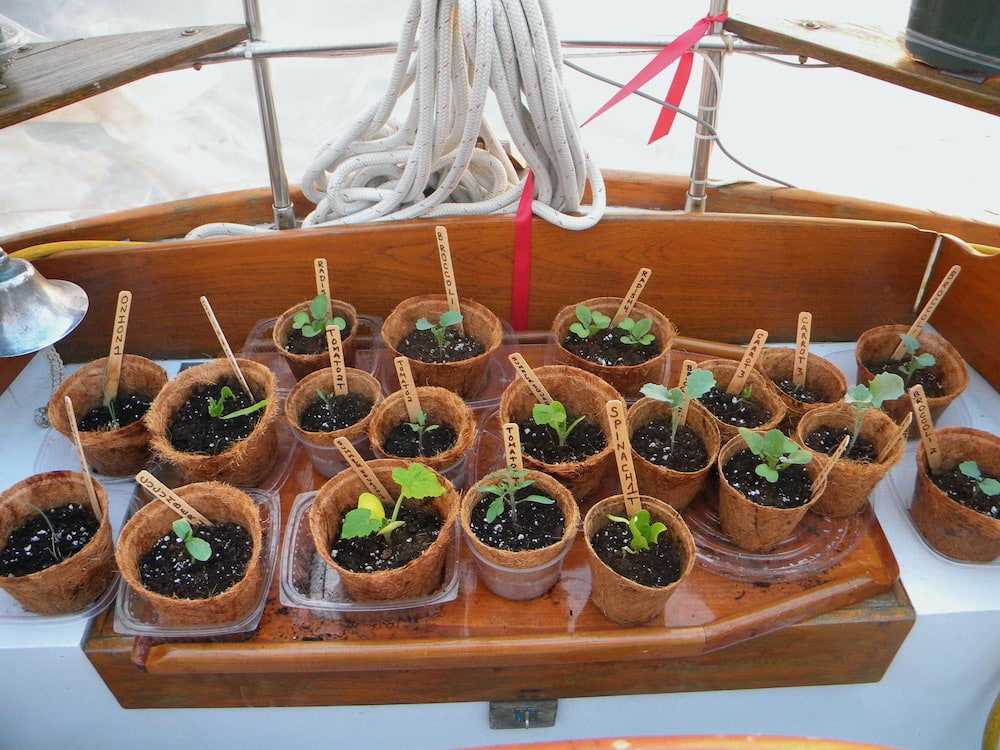
Victory Gardens typically focus on easier-to-grow fruits and vegetables for the beginner. And since gardening is not an “overnight thing” and can be challenging, it was recommended to start small and that every year you can build off of it and add more. Gardens could even be grown in containers on the porch. The point was that every little bit helped.
So, if you are starting a garden this year, don’t try to take on too much.
Evaluate What You Already Have
First, evaluate your skills and your property for what you already know and have.
As for me, I’ve had fruit & vegetable gardens up in New England before, but have not focused on that yet here in Pennsylvania. There are some differences with that; for one, it’s 10 degrees warmer here on average. So I’ll need to sharpen my skills and understand that I will make some unintentional mistakes.
And for the property, my home is a 3rd generation home; my husband’s grandmother developed the gardens here. Currently, it mostly has an abundance of perennial flower gardens that are inedible. But I do have echinacea and spearmint. We also have a grapevine that’s been here for decades and an apricot tree, that could each use a little cultivating. So this year, my first course of action is to give more attention to these. So look at your property. Look for what is already there, that you could focus on.
Do One Vegetable Garden Bed and/or Container Garden First
Yes, I would love to have multiple garden beds worth of vegetables planted, but I know I can’t bite off more than I can chew. If I am successful with the one raised bed this year, that will inspire me to put in a second one the following year.
By doing this, I can also assess what worked and what didn’t work on a smaller scale. What works for one gardener, might not work for another. For example, we have a lot of deer, rabbits, and moles in our area, that could easily go after the garden. Or they might not. I haven’t seen neighbors in my area use fencing to keep them out, so maybe they won’t be a problem. Or maybe it will. I won’t know for sure until I try. And what about bugs? There are certainly some different bugs here than up in New England. So that is something I’ll have to keep in mind.
Another issue could be the spot I pick. Maybe it’s not sunny enough for what I have planted. It would be much easier to move one raised bed than multiple ones.
Also, another option you can look into is container gardens on your porch. Herbs, tomatoes, peppers; all of these work very well in containers. I have two planters on my front porch that I usually decorate for the season, but this year I plan to try some herbs in them.
Pick What You Are Going to Plant
“For a Small Garden: Beans (snap), beans (lima), tomatoes, carrots, beets, kale, turnips, cabbage, onions, radishes, spinach (New Zealand)”
United States Department of Agriculture. (1943). Victory Garden Leader’s handbook.
Graph on Pg. 16
The above quote describes some of the vegetables that were promoted by the government to plant in Victory Gardens during WWII. Nutrition was paramount, so I bet that these were picked specifically for both their ease of growth and their nutritional content. If you are interested in this book, I have found a free, complete digital copy on archive.org that you can read here; Victory Garden: Leader’s Handbook by the United States Department of Agriculture.
I plan to only do a few different vegetables to start with; tomatoes and spinach from the list above. But I also plan to do peppers, because they are a favorite in my family.
Start to Plan for the Years Ahead
My next step is to put in a few blueberry bushes and strawberry bushes. These bushes, although they are not from seed (which would be an even longer time), still won’t produce until the following year. I might also put in a few apple trees, another one that wouldn’t produce for a while. So if you are interested in fruit trees or bushes, plant them this year, to get a start on them for the future.
Another thing to consider, if you have some space, is composting.
“Compost piles established in the fall and turned from time to time through the winter will bring higher yields when worked into the soil next year. If left through the next summer and winter, the compost is even better.”
United States Department of Agriculture. (1943). Victory Garden Leader’s handbook.
Home Canning & Food Preservation
“Government officials asked individuals to organize their garden activities in conjunction with the canning outcomes that they envisioned, urging them to “plan your canning budget when you order your garden seeds.” The interconnectivity of the two activities ensured that just as victory garden yields reached their peak in 1943, so too did canning levels.”
Food rationing and Canning in World War II. National Women’s History Museum. (2017, September 13). Retrieved March 18, 2022, from https://www.womenshistory.org/articles/food-rationing-and-canning-world-war-ii
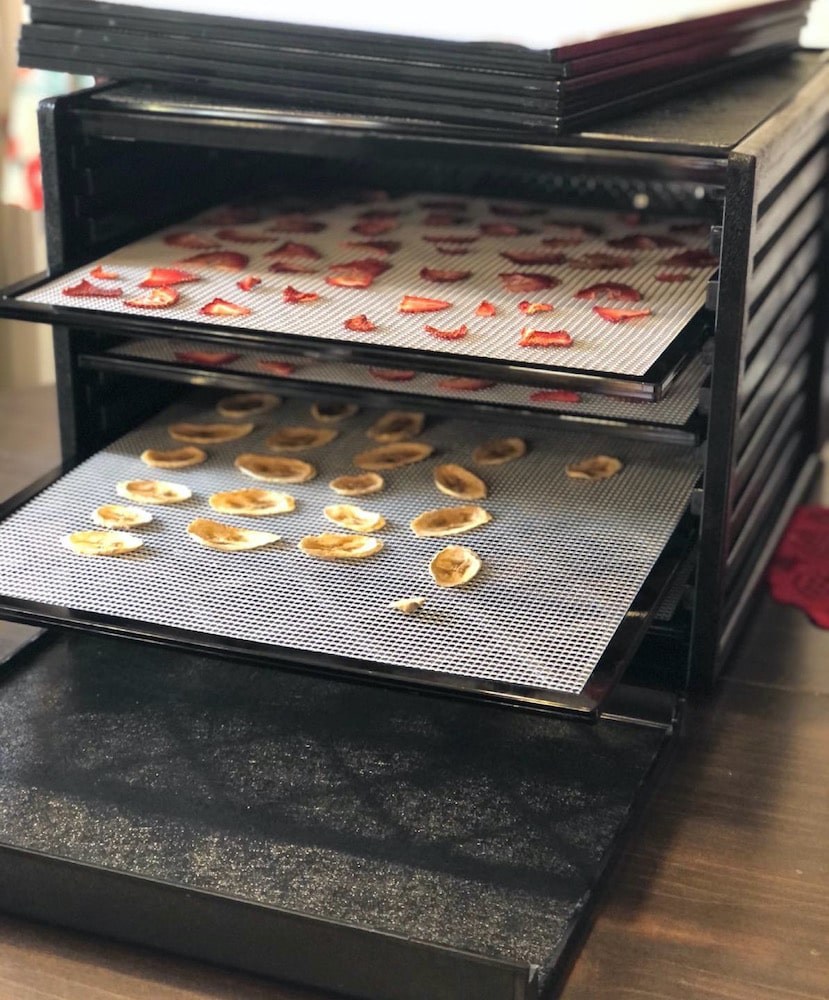
Don’t forget to research preservation techniques for the produce you grow. Canning, dehydrating, freezing, and pickling are some of the ways you can preserve your yield. Nowadays, we have some great options for doing this. You can buy your own pressure canner, dehydrators, and even vacuum sealers to freeze for longer periods. Pictured here is my dehydrator; it is so good it can go low enough to dry delicate herbs, but still dehydrate meats into jerky safely. We are extremely lucky today to have access to these items.
Victory Gardens and Community
This article would be incomplete if I failed to talk about the community aspect of Victory Gardens. From everything I have read from the direct source materials, there was a tremendous urging to form a community and a recommendation to share tools, resources, and knowledge. For example,
“Farmers do a lot of implement swapping, and gardeners can do the same. A borrowed hoe works as well as your own, and both borrower and lender feel patriotic about the deal, if the spirit is right.”
United States Department of Agriculture. (1943). Victory Garden Leader’s handbook.
So if you have family members or neighbors you can share tools with, that’s great! But there is also a community knowledge component, too. Luckily we can also harness the power of the internet for good. So, if you have any tips or questions, please comment below. If I don’t know the answer, maybe someone else could answer from their experience of gardening.
Wrapping Up
This article is one that I will continue to come back to and update. As I gain more experience with my garden, come across a great resource about this that I want to tell you about, or the world situation changes drastically, I plan to keep this resource as current as possible. I will write at the top of the page the most recent modified date.
Resources to Learn More
America’s Patriotic Victory Gardens by History.com
Just How Tough was WWII Rationing? Very by AARP
Sacrificing for the Common Good: Rationing in WWII by the National Parks Service
Food Rationing and Canning in WWII by National Women’s History Museum
Victory Garden at the National Museum of American History
Victory Garden: Leaders Handbook by United States Department of Agriculture 1943
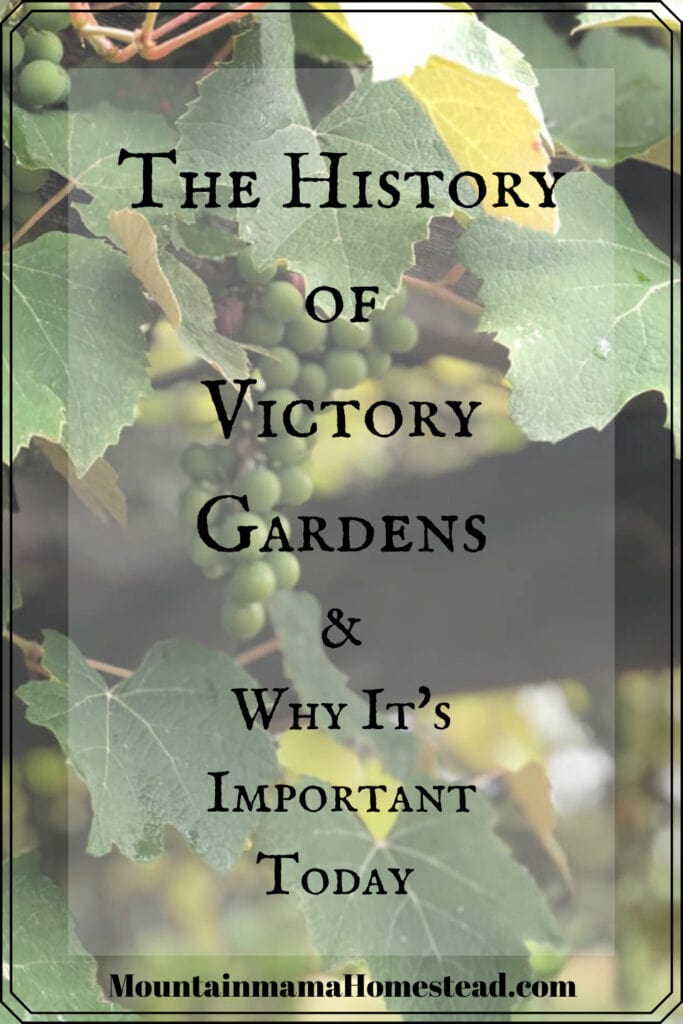
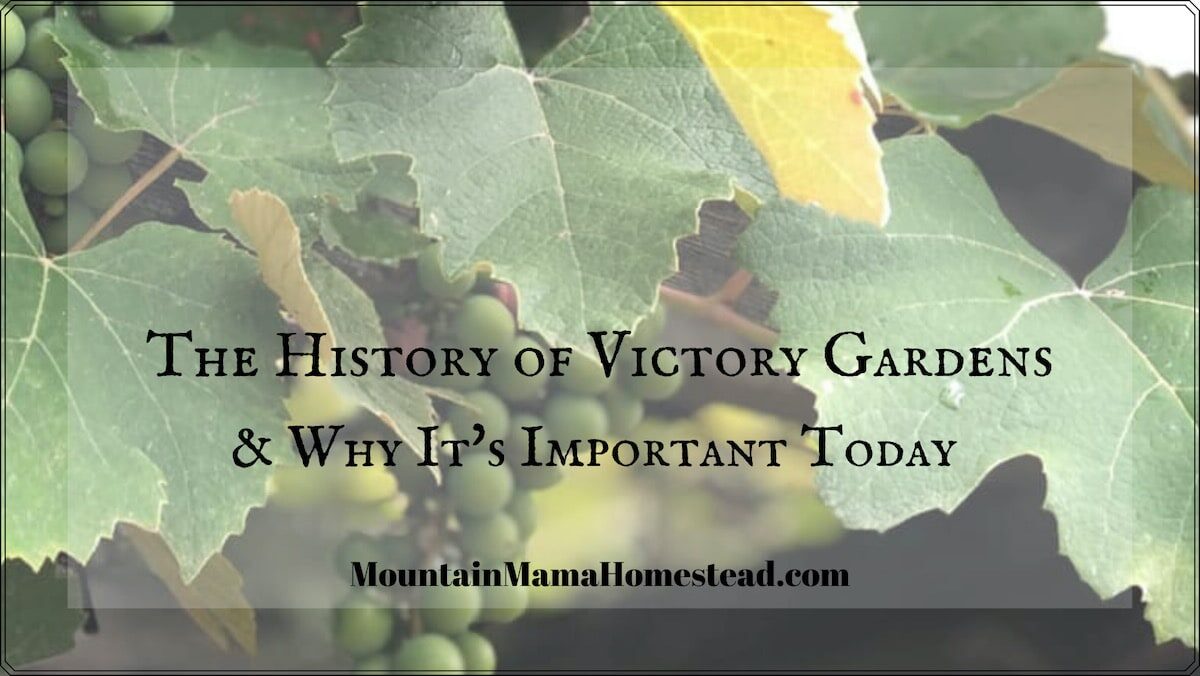
Twicsy
This is very interesting, You’re a very skilled blogger.
I have joined your rss feed and look forward to seeking more of your excellent
post. Also, I have shared your web site in my social
networks!